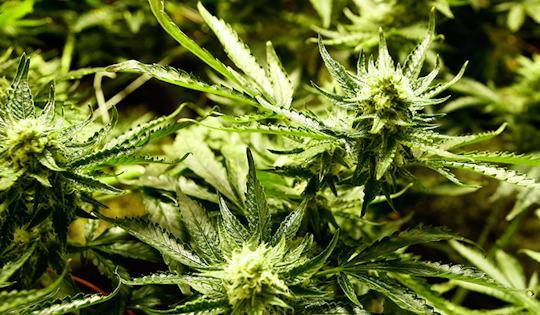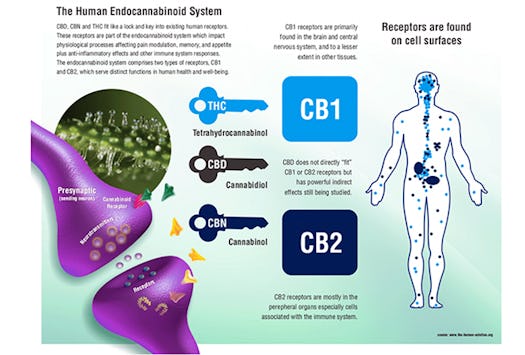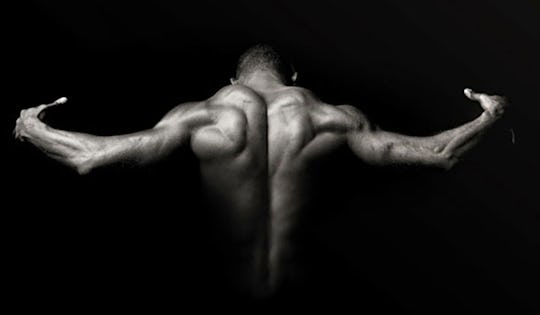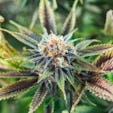As marijuana becomes more mainstream, with seven states preparing for legalization (hot on the heels of my home state of Washington, and also Colorado, Oregon, Alaska and Washington D.C.), an increasing number of athletes, including triathlete Clifford Drusinsky (a future podcast guest) and what seems to be nearly the entirety of the UFC, are now turning to marijuana as a training aid for their running, swimming, cycling, lifting, fighting and more.
Since pot has long been known to reduce discomfort, maximize stomach health, and improve mood, it’s no surprise to see marijuana legalization seemingly accompanied by a surge of use among both recreational and hardcore athletes who are facing multi-hour, grueling training regimens, and who are turning to versions of weed that don’t harm the lungs, such as vaporizing, edibles and pot-based energy bars (recipe coming later in this article), and oils (if you want to try 100% legal and highly absorbable CBD Oil Extract, use discount code BEN10 to get 10% off at BioCBD+).
Some athletes swear by using marijuana or its isolated active ingredients, such as delta-9-tetrahydrocannabinol (THC) and cannabidiol (CBD) as performance-enhancer drugs, saying these substances ease anxiety and increase pain threshold so that they can push themselves during workouts. Others say that smoking pot disintegrates their motivation to work out, and instead they find themselves munching Doritos while watching cartoons (a great way to decrease cortisol, but not an incredibly effective way to make big fitness gains).
Though marijuana (cannabis sativa) is banned by the World Anti-Doping Agency (WADA), the United States Anti-Doping Agency (USADA) and the NCAA, its increasing legality has many wondering whether using marijuana will help or hinder our quests for optimum athletic performance and fat loss.
Do THC, CBD, or other ingredients in marijuana enhance athletic performance on a molecular level? In this article, Ben Greenfield and GreenfieldFitnessSystems author Alyssa Siefert (a PhD in Biomedical Engineering) attempt to answer this question.
A few notes before we dive into the science – because only a few double-blind placebo-controlled human studies exist (the classification of cannabis as a Schedule 1 Drug by the DEA inhibits academic research), many of the purported effects of marijuana are extrapolated from rodent studies. So because there are significant differences between the endocannabinoid systems of rodents and humans (science geek-speak for “mice are not men”), certain findings from science are tough to extrapolate to actual people; you’ll notice, as you read, that in many cases the science you read about elsewhere simply does not apply to humans.
Also, as you read, it is important to remember that cannabis exerts different effects depending on dose, gender, acute versus chronic use, and route of administration (smoking vs. edibles vs. ingesting).
OK, caveats and clarifications aside, let’s jump right in.
What Happens To Your Body When You Consume Marijuana?
Here in the USA, legislation defines marijuana as all parts of the cannabis sativa plant, which contains over 700 chemical compounds. The primary active ingredients are cannabinoids, including THC, which is responsible for psychoactive effects and is the most studied.
Peak blood concentrations of cannabinoids occur about 3-8 minutes after you inhale, as opposed to 60-90 minutes after you eat a weed- or oil-containing edible, with neural effects beginning after 20 minutes and maximizing within a range of 2-4 hours. Cannabinoids bind cannabinoid receptors (easy to remember, eh?) on neurons and peripheral cells, receptors which are normally engaged by natural endogenous substances (called endocannabinoids) that your body already makes, but that also can be bound by substances from exogenous (outside) sources.
THC binds cannabinoid receptor 1 (CB1), mainly localized in the brain, while cannabinol (CBN) binds CB2, which exists mainly on immune cells. CBD binds neither receptor, but still affects numerous metabolic processes including appetite, pain sensation, immune function, stress reactivity, hormonal secretions, and muscle and fat tissue signaling.
The image below does a pretty good job visualizing this for you, and explaining the lock and key mechanism of receptors and substances that bind to those receptors.
Dosing: Real Life vs. Lab Studies
The effects of marijuana differ enormously depending on strain, as each type contains varying amounts of cannabinoids. A good resource to examine specific strains is Leafly, which is the Yelp of marijuana and extensively reviews cannabis components and makes recommendations based on mood and activities. Generally, because the majority of folks seem most interested in the psychoactive THC properties of weed, most marijuana strains have been developed over time to contain increasing amounts of psychoactive THC (up to 25% THC as shown on lab certificates and reported values of up to 35% THC) and lower amounts of other cannabinoids like CBD.
The “sweet spot” for mild psychoactivity is about 2-3 mg THC (with users reporting feelings similar to 1-2 alcoholic drinks), with significant and strong psychoactivity reported at 5 and 10 mg, respectively. As such, Colorado dispensaries have set THC units at 10 mg for edibles. So how does this translate for recreational users?
Some of our fellow PhD’s calculated that the average joint contains slightly less than half a gram of marijuana (0.018 ounces), and 50-60% of cannabinoids like THC are absorbed into the bloodstream and bind receptors when smoking, with the rest lost to combustion and sidestream smoke. So depending on the strain, the total THC absorbed per hit could range from 1 mg to 15 mg. Eating marijuana in edibles or consuming it in oils actually decreases the amount of cannabinoids absorbed (10-20%), but the liver converts THC to 11-hydroxy-THC, which has more significant psychedelic effects and lasts about twice as long in the body.
Keep the above doses in mind as we review more marijuana studies below.
How Does Marijuana Affect Athletic Performance?
It is generally accepted that smoking or ingesting marijuana decreases reaction time, disrupts hand-eye coordination and perception, and divides attention, and these effects can last up to 36 hours after usage.
A double-blind flight simulation study assessing motor performance in licensed pilots “flying” through pre-specified (and practiced) holding patterns showed that smoking marijuana significantly increased major and minor errors, and led to larger average deviations from the assigned flight sequence, compared to those who smoked placebo cigarettes. Performance was adversely affected for at least two hours after smoking, returning to control levels six hours later. The dose used was 0.09 mg THC per kg, translating to 7-8 mg THC for an average American male, equivalent to 1-4 joint hits, depending on strain.
Just in case you were entertaining the adorable thought of mouse pilots, the study cited above was indeed a human study.
This cognitive impairment may be explained by differential blood flow in the brain. In one study, brains were imaged by Positron Emission Tomography (PET) to measure the acute effects of smoking marijuana. In the study, subjects performed auditory attention tasks before and after smoking pot.
After smoking, there was a substantial reduction of blood flow to the temporal lobe, an area important for focused tasks, and this reduced blood flow correlated with impaired performance. Interestingly, smoking marijuana increased blood flow in other brain regions, such as the frontal lobes and lateral cerebellum, regions associated with decision making, sensory perception, sexual behavior, and emotion. So it seems that the brain engages in significant blood flow shifting to specific areas under the influence of substances in marijuana.
Given these studies, one could conclude that smoking weed before a complex game, a task that requires very fast decision-making or reflexes, or a workout that incorporates new exercises could be a poor decision for peak performance. However, many studies supporting this logic use unrealistic doses (such as 100 mg THC), and behavioral studies suggest that only complicated tasks are impaired by marijuana, as a similar study with tasks of variable difficulty level showed that people are still able to perform simple tasks.
Therefore, an endurance athlete may benefit from the pain-numbing and bronchodilatory effects of marijuana to get through a tough training session, and a UFC fighter who is using THC in moderated doses could actually be able to experience a combination of pain-killing, creativity and focus. But including marijuana in high amounts – and especially meeting or exceeding doses of 100 mg THC – into a routine requiring complicated movements, an element of danger and teamwork, such as a Spartan Race or Tough Mudder, could be a recipe for disaster.
How Does Marijuana Affect Muscle Growth?
So let’s say you decide to use marijuana before a boring or standard lifting session in which you know the movements like the back of your hand. Will weed inhibit muscle building? Despite a number of adamant bloggers insisting it will diminish your power output or amplify your gains, the answer actually remains unclear.
For example, because long-term use of marijuana downregulates the expression and responsiveness of the CB1 receptor, in a manner similar to frequent blood sugar swings leading to insulin resistance, some say that THC may impair muscle building by interrupting the mTOR signaling pathway, which is important for protein synthesis. Furthermore, an oft-referenced human study shows that marijuana inhibited secretion of Growth Hormone, which does indeed suggest inhibited muscle building.
However, this study used a very high dose of 210 mg THC per day for 2 weeks (that’s a boatload of weed), and while mTOR disruption by THC has been elegantly shown in the brains of rats, it has not been studied in human muscles; thus these deleterious effects on muscle synthesis are purely speculative.
Notably, the non-psychoactive component of marijuana, CBD, has been shown to regulate mTOR in a different way than THC, and CBD has been repeatedly shown to induce several health-promoting effects such as, increasing cognitive performance in mice. Perhaps CBD counteracts the potentially detrimental effects of THC on muscle building. This would simply mean that the different components of marijuana could be helpful and harmful for muscle synthesis, and in practice, consumption of THC-rich strains would need to be accompanied by absorbable CBD oil to counteract any loss in muscle gain potential. Ultimately more focused muscle-building studies are needed on human athletes to make conclusions.
Ben, always the relentless self-experimenter (as we know from photos like the one below from his UConn study), has actually been experimenting extensively with CBD oil extracts in his training (combined both with and without THC-rich edibles) and will be reporting on the effects in detail soon. As a matter of fact, if you listen to podcast #314, you can hear Ben’s thoughts on 10, 15, 20 oil-based THC doses and even a rather humorous 250mg (yes, 250) edible THC doses.
What Weed Does To Your Hormones
Because hormones are critically important for overall health and performance, it is important to understand how marijuana affects these systems. Numerous forums insist that marijuana induces unfavorable hormonal changes. For instance, marijuana has been shown to suppress the hypothalamic-pituitary axis (HPA) in rodents, but human studies suggest variable effects on the HPA axis. In both males and females, a realistic dose of THC (cigarettes containing 2.8% THC) immediately lowered Luteinizing Hormone (LH) and raised the dangerous stress-associated hormone cortisol, which may underly the paranoia some users experience. A recent study, one of the few with sufficient sample sizes, showed that the cortisol response to physiologically-relevant amounts of THC was blunted in chronic cannabis users; while plasma cortisol levels increased in a dose-dependent manner in both non-users and frequent users, frequent users showed less of a cortisol surge.
Many people believe that HPA suppression decreases the production of testosterone in men. Yet, the vast majority of testosterone in human males is produced by Leydig cells in the testes, with about 5% produced under the control of the HPA axis, so HPA suppression is unlikely to significantly alter the total amount of testosterone in humans. The hormonal effects of marijuana on women are complicated by natural hormonal fluctuations depending on menstrual cycle. A popular report posited that THC competes with estradiol to bind estrogen receptors and thus THC acts like estrogen; however, this was a rat study that may not translate to human biophysical interactions. Overall, surveying the literature found no definitive evidence that marijuana depresses sex hormones long-term.
Furthermore, chronic marijuana use may induce tolerance and reset HPA set-points such that any suppression of hormones returns to normal levels. Supporting this logic, the largest human study to date found no significant long-term hormonal changes in chronic marijuana users, and suggested that earlier studies involved insufficient sample sizes. Furthermore, a meta-analysis and human simulation study showed that male testosterone levels, while depressed immediately after marijuana use, returned to previous levels after 24 hours. Overall, based on the current evidence, it’s very tough to believe that marijuana induces permanent, damaging hormonal changes in most people.
Does Weed Make You Fat?
As stoners seem to come in all shapes and sizes, it is unclear from mere observation whether weed leads to weight loss or gain. Perhaps counterintuitively, a 2013 adjusted epidemiological study showed that obesity rates are significantly lower for all groups of cannabis users (inclusive of gender and age) compared to those who had not used cannabis in the last 12 months. Although these findings have been replicated, the cross-sectional nature of this study precludes establishing causality; we cannot conclude that marijuana causes weight loss.
The lower Body Mass Index (BMI) of pot-smokers may be explained by an adaptive down-regulation of brain endocannabinoid signaling. While acute THC stimulates appetite, the repeated stimulation of CB1 receptors by THC decreases receptor expression and sensitivity, and long-term stimulation may result in antagonistic rather than agonistic triggering of CB1 receptors, which would dampen hunger signals.
Furthermore, CBD and another component of marijuana, tetrahydrocannabivarin (THCV), may reduce body weight, as animal models of obesity using overweight mice have shown THCV to increase metabolism of fat cells. But before you get excited that marijuana may burn fat, please realize that very few strains on the market have significant levels of THCV, so do your research (such as these four strains of skinny-pot that won’t bring out the munchies).
Therefore, research shows that marijuana does not directly contribute to fat gain, and properly harnessing its dose-dependent stimulation or suppression of appetite may enable muscle gains or fat loss. For example, biohacking bodybuilders (or others desiring a post-workout anabolic state) can increase post-workout protein intake for mass and muscle building by consuming THC (in a higher-than-usual dose) before big workouts, while those pursuing fat loss and appetite control may actually suppress nighttime cravings by using smaller doses of THC on a more frequent basis.
A Personal Experience
After reading the article “How to Make Pot-Infused Energy Bars at Home“, in preparation for a self-report in this article, Ben actually made pot-infused energy bars (100% legal in his state), following this exact recipe for “No-Bake Toasted Coconut Energy Bars”. Be extremely careful to know how much you are consuming if you use a recipe like this. You may find this article helpful to make sure you do not overdose on THC like Ben did.
Ingredients are as follows:
- Ground weed (a little goes a long way – make sure you use a digital kitchen scale and know exactly what a “gram” of ground weed is if you don’t want to repeat Ben’s mistakes!)
- At least 2 tablespoons of coconut oil
- ¼ cup butter or coconut butter
- 2 cups of unsalted cashews
- 1 cup of pitted dates
- Ground cinnamon
- Sea salt
- 2/3 cup of unsweetened shredded coconut
- A brownie pan
- Parchment paper
- A food processor
With full credit to this article in Men’s Journal, the instructions are as follows:
Step One
First, extract your THC. Grind a tablespoon of pot, whichever strain you want — sativas will keep you from wanting to stay on the couch (Ben found approximately 1.5g to be a sweet spot for him, close to 15mg THC) , but indicas will be better for relieving discomfort, if you’re aiming to go for a longer distance, so it’s up to you and what you’re used to (Ben noted that hybrid stains with a blend of indica and sativa are good for any kind of workout – particularly a strain called Lemon Haze). Then, in a crock-pot or a double boiler (or a regular sauce pan), on very low heat, cook 1 cup of oil with the ground herb. Stirring occasionally, every half hour or so, you should heat the oil and the pot together for at least 2 hours, if not 3. You can modify these measurements according to what you want to make, of course; do the math.
Step Two
Preheat your oven to 350° F. Spread 2/3 cup of unsweetened shredded coconut onto a baking sheet, and cook it for 5-6 minutes, until the coconut is golden.
Step Three
Put the coconut aside, and spread 2 cups of unsalted cashews onto the baking sheet. Cook those for another 5-6 minutes, until fragrant.
Step Four
In a food processor, mix the coconut, cashews, 1 cup of pitted dates, a healthy amount of cinnamon, and a tiny amount of sea salt. Pulse until the mixture is crumb-like.
Step Five
Add ¼ cup of unsalted butter (you can also use coconut butter, if you’re lucky enough to find it) and 2 tablespoons of your THC-infused coconut oil. Pulse until the mixture starts to clump. If it looks too dry, go ahead and add a little more butter. (Or more coconut oil, if you’re feeling optimistic.)
Step Six
In a brownie pan (8 by 8 inches should do the trick), dab some oil and lay down a sheet of parchment paper. Make sure the paper sticks to the sides. Then pour out your mixture into the pan, smooth it out, and stick the whole thing in the freezer for 15-20 minutes.
Step Seven
Slice them up and eat one (Ben found about 45-60 minutes prior to a workout is a sweet-spot). Or put one in your gym bag for later. Makes 8-16 bars, depending on your tolerance.
Seems like a lot of work to go through for experimenting with whether weed works for your workout? If so, you can use a small portable vaporizer, an oil-based vaporizer, or you can get more targeted microdoses of THC in oils or lozenges, which generally have about 10 mg THC per serving, but can be microdosed, split into smaller pieces, etc, for doses as low as 1-5 mg THC, or even consumed in their non psycho-active (and legal in all 50 states) CBD capsule or oil version.
Summary
So now that we’ve thrown a bunch of science at you, are you thinking that marijuana is an asset or an obstacle to burning fat, building muscle, and performing at your best? Like any other tea, herb, powder, oil, capsule or supplement, its utility depends on your unique physiology and how you use it. If you read the article above carefully, you’ll notice many practical tips from Ben about what has seemed to work for him with the moderated doses of both THC and CBD he has been experimenting with.
While marijuana often has an anxiolytic effect that can aid sleep and thus enhance recovery, some people (often those hard-charging overachievers with high cortisol) find it antithetical to their goal of finding inner peace. So once again, it is crucial to find the dose that complements your hormonal baselines to promote feelings of well-being, rather than paranoia, and combining smaller amounts of THC with ample amounts of CBD can be a good way to achieve this sleep and recovery goal.
Ultimately, it appears from science that most of the beneficial effects of weed are derived from CBD and THCV. Unfortunately, if you live in a state or area where weed is not legal, most of the marijuana you get from the guy across town contains high levels of THC and little or no CBD, and the data is fairly conclusive that THC impairs cognitive and motor performance.
So when it comes to exercise and physical activity, we wouldn’t recommend smoking up before a complicated event requiring fine motor skills or people depending on you, such as a team Tough Mudder, a doubles tennis match, a basketball game, ballroom dancing, or lifting ungodly amounts of weight over your head, but you probably don’t need to worry too much about taking a pre-lift or pre-run toke or edible if you have normal cortisol levels and you find your motivation and performance remains intact or improves.
If you’re interested and within the bounds of legality, we’d advise performing an n=1 experiment to determine if marijuana increases or decreases your levels of stress, motivation, and appetite, and then rationally use it to aid your training and recovery plans accordingly. Let us know how it goes, and leave your questions, comments and feedback below!



)





